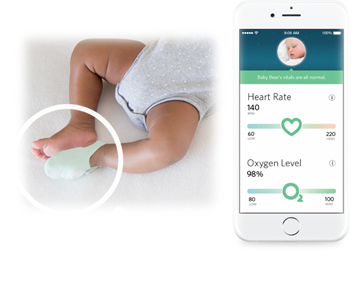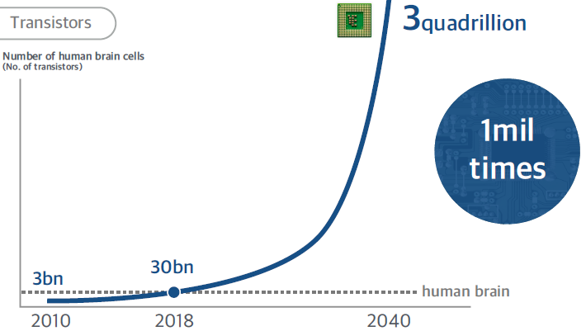Mobile World Congress’ Marvelesque Duel: Mobility Drives Forces For Good And Evil
 Attendees flocked to yet another Mobile World Congress in Barcelona earlier this month, attracted by the buzz of new devices, new technologies, and new business opportunities. This year 108,000 registered attendees and 2,300 exhibitors contributed to that buzz.
Attendees flocked to yet another Mobile World Congress in Barcelona earlier this month, attracted by the buzz of new devices, new technologies, and new business opportunities. This year 108,000 registered attendees and 2,300 exhibitors contributed to that buzz.
While the new devices themselves drew much attention, the full impact of these new toys lies in what is done with them. Some of the opportunities on display reflected what I started to see as a Marvelesque duel of good versus evil. Here are a few examples.
It's Time To Put Mobility To Good
Yes, some are for entertainment purposes only but many hold the potential to “do good.” GSM Association (GSMA) promotes the use of mobile technologies to advance the UN sustainability goals. GSMA’s Big Data For Social Good (BDSG) initiative seeks to leverage the networks of 16 operators and 2 billion connections across 100 countries. That might be using the data for analytics and insights on how to provide financial services to the unbanked or extend health services to remote rural areas or to better protect marine mammals. Examples of these solutions on the show floor included:
 Tracking migration of sea lion populations. In the GSMA’s Innovation City pavilion, Celia the seal modeled a new NB-IoT low power wide area tag which helps to track Scottish harbor seals and monitor climate change through joint project between the University of St. Andrews and Vodafone. The new tags are lighter with a longer battery life than previous models, and can track the seals wherever they go.
Tracking migration of sea lion populations. In the GSMA’s Innovation City pavilion, Celia the seal modeled a new NB-IoT low power wide area tag which helps to track Scottish harbor seals and monitor climate change through joint project between the University of St. Andrews and Vodafone. The new tags are lighter with a longer battery life than previous models, and can track the seals wherever they go.- Monitoring health from babies to boomers. Several exhibitors demonstrated health-related wearables. A sensor-enabled bootie from Owlet provides peace of mind for new parents by monitoring heart rate and oxygen levels. At the Cisco Jasper booth in the Innovation City pavilion, devices offered the elderly greater independence while ensuring that they remain connected to loved ones, caregivers and healthcare providers. Wiwe, a do-it-yourself, in-home electrocardiogram device sends “a message from the heart” with notification of atrial fibrillation and myocardial status.
- Tactile sensing for remote diagnostics. A joint project from Ericsson and King’s College London demonstrated tactile robotic surgery in which a sensor-enabled glove provides the surgeon with the sense of touch during remote surgery. The technology can be used for diagnosis or during the surgery for identifying cancerous tissue. The probe, or robotic finger, is able to identify cancer tissue and send information back to the surgeon as haptic feedback.
Unfortunately Connectivity Alo Enables The Bad
 According to a recent GSMA survey most people think the world is inherently insecure, or least the mobile world: 86.1% of respondents agree that a secure environment will never exist because new threats will continuously arise. And, in his day one keynote, the CEO of Softbank stoked fears with a menacing depiction of the phenomenon of “singularity” – when computer intelligence exceeds that of human brain – and predicted the overtaking of humans by robots by 2018. As the theory goes, the human brain has a fixed 30 billion neurons, and the highest recorded human IQ was around 200. In 2010 computers had only 3 billion but by 2018 they would converge with humans. Extrapolating that trajectory, by 2040 computers would have 3 quadrillion for an IQ 10,000. Vive the new super intelligence.
According to a recent GSMA survey most people think the world is inherently insecure, or least the mobile world: 86.1% of respondents agree that a secure environment will never exist because new threats will continuously arise. And, in his day one keynote, the CEO of Softbank stoked fears with a menacing depiction of the phenomenon of “singularity” – when computer intelligence exceeds that of human brain – and predicted the overtaking of humans by robots by 2018. As the theory goes, the human brain has a fixed 30 billion neurons, and the highest recorded human IQ was around 200. In 2010 computers had only 3 billion but by 2018 they would converge with humans. Extrapolating that trajectory, by 2040 computers would have 3 quadrillion for an IQ 10,000. Vive the new super intelligence.
But New Threats Drive New Solutions.
The GSMA survey found that only 13.9% of respondents felt that innovation would eventually secure the mobile ecosystem. That doesn’t mean vendors will stop trying. And, many of the vendors present demonstrated new security-related solutions.
- Secure communications. With the shenanigans of the NSA continuing to make headlines, secure communications remains a top concern. One of the taglines in the dark, menacing-looking DarkMatter booth promised that “The only person listening to your call is the person you called.” A breakout panel was even entitled, “Making Your Mobile Communications 100% Secure And NSA Proof.”
- Data privacy and security. According to GSMA survey, 54.3% of respondents are willing to share their data with a 3rd party but only for data they have approved to be shared; another 23.5% were willing to opt-in to data sharing. Recognizing the need to strike a balance, Forrester’s own Fatemeh Khatibloo moderated a panel entitled, “Consumer Data: Privacy and Opportunity” with a number of vendors providing solutions to protect privacy and enable consumer control of their data.
- Secure, connected vehicles. Interestingly, the first speaker in a keynote about connected cars was Eugene Kaspersky, the CEO of Kaspersky Labs, a security solution provider, who highlighted the vulnerabilities of connected cars. IoT security solution providers such as Gemalto specifically called out the vulnerability of cars, offering solutions to prevent breaches. Newly connected devices may bring new threats but that is music to the ears of security solution providers
The moral of the show was certainly that mobility continues to drive opportunity. And, even when some exploit opportunities to do bad things, there are plenty more innovators out there to develop the antidote.
Frankly, I love the drama of Mobile World Congress.